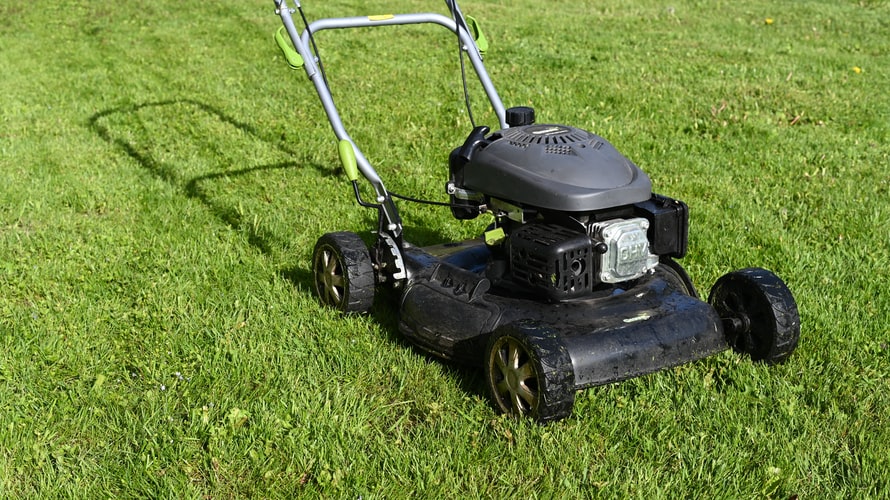How to Maintain Your Residential Lawn Mower
Knowing how to maintain your residential lawn mower can save you time and money. Whether you’re a do-it-yourselfer or you prefer a professional shop for your lawn mower maintenance, it’s essential to know what requires maintenance and the best time to complete the work.
Although most of what we’ll share today can be completed at the end or the beginning of the season, we like to use routines for our equipment maintenance here at Berger Hargis. We suggest a set checklist for pre-and post-season.
And yes, our machines are very different from a residential lawn mower, but they have much in common. They both use gasoline (although we’re transitioning to electric), require oil, air filters, and need regular cleaning.
Beginning of the Season Mower Maintenance Checklist
Following the checklist below will help you start your mowing season without calamity. If you’ve ever had your mower break down in the middle of the season, you understand. Most of us have seen grass that was so far past the time to mow that it needed to be harvested! Once again, whether you DIY or hire a professional service, the critical point is to know what should be done.
- Change the oil
- Replace the spark plug
- Clean or replace the air filter
- Sharpen and balance the blade
- Clean the exterior and the mower deck
End of the Season Mower Maintenance Checklist
- Drain the fuel or add a fuel stabilizer to your gas
- Disconnect the sparkplug
- Change or top off the oil
- Clean exterior and mower deck
Cleaning the Mower Deck
So why is cleaning the mower and mower deck on both checklists? That’s because dirty equipment of any kind can lead to problems. Here’s how to clean the deck.
- Empty the mower of all gasoline
- Turn the mower on its side, exposing the inside of the deck
- Spray the deck thoroughly with a hose. Your garden hose will work fine, no need for a power wash
- Clean the interior of the deck with a soft-bristled brush and soapy water
When is Fuel too Old to Use?
Regular gasoline has a shelf life of three to six months. If you want to play it safe, don’t use any gas that’s three months old or older. Old fuel loses octane, becomes less volatile, and can leave gummy deposits that can foul your engine.
What about Fuel Stabilizers?
“Fuel stabilizers keep fuel fresh and effective for at least two years of storage time. Chemical reactions within stored fuel, plus the evaporation of some volatile components, can leave liquid fuels less likely to ignite properly in an engine after more than three months of storage. The bottom line is trouble unless you let a fuel stabilizer prevent it.” — The Family Handyman
What is Fogging Oil, and Do You Need it?
Fogging oil is aerosol petroleum used for lubrication and corrosion resistance, usually during storage. It forms a film on metal parts that remains on the engine while in storage. Check your owner’s manual to see whether the manufacture recommends fogging—and speaking of your owner’s manual.
Read Your Owner’s Manual
Not only read your owner’s manual but study it. There’s a reason a manufacturer publishes and shares an owner’s manuals – it’s to help you protect your investment and get the most out of it. Too many people toss the manual in a drawer, never look at it, and then wonder why their mower broke down.
If you take the time to follow a pre- and post-season routine for your residential lawn mower, you’ll get years of use out of your mower. Learning how to maintain your residential lawn mower can go a long way in getting the most out of your residential mower.
If you are in need of landscaping or lawn care work, give us a call at (317) 243-0100 or visit our website to see how we might assist you! We would love to partner with you to provide you with the absolute best quality and service!
Stay up to Date!
If you enjoyed this post you might also like, Down to the Root.
Photo by Andres Siimon on Unsplash
Go Back







